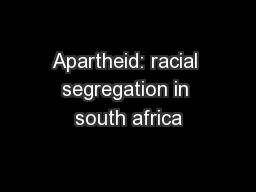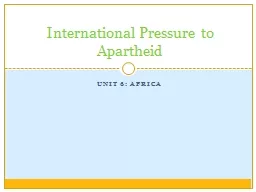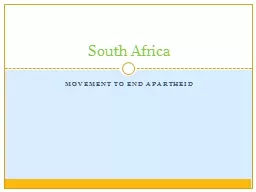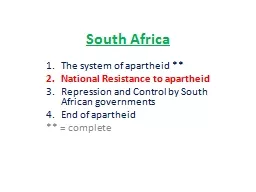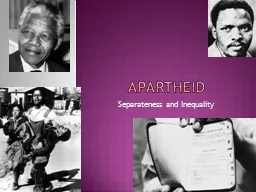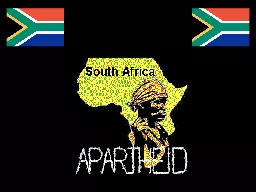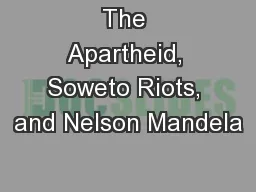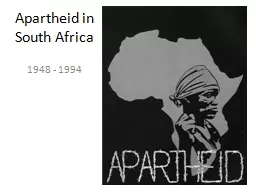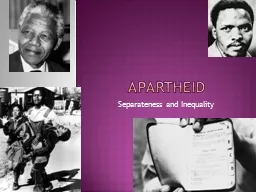PPT-Apartheid: racial segregation in south africa
Author : myesha-ticknor | Published Date : 2016-09-02
History Before Apartheid 1500 years ago Bantu migration south 1600s 1 st Europeans Dutch East Indies Companysettle in Cape Town became known as Afrikaners af
Presentation Embed Code
Download Presentation
Download Presentation The PPT/PDF document "Apartheid: racial segregation in south a..." is the property of its rightful owner. Permission is granted to download and print the materials on this website for personal, non-commercial use only, and to display it on your personal computer provided you do not modify the materials and that you retain all copyright notices contained in the materials. By downloading content from our website, you accept the terms of this agreement.
Apartheid: racial segregation in south africa: Transcript
Download Rules Of Document
"Apartheid: racial segregation in south africa"The content belongs to its owner. You may download and print it for personal use, without modification, and keep all copyright notices. By downloading, you agree to these terms.
Related Documents

